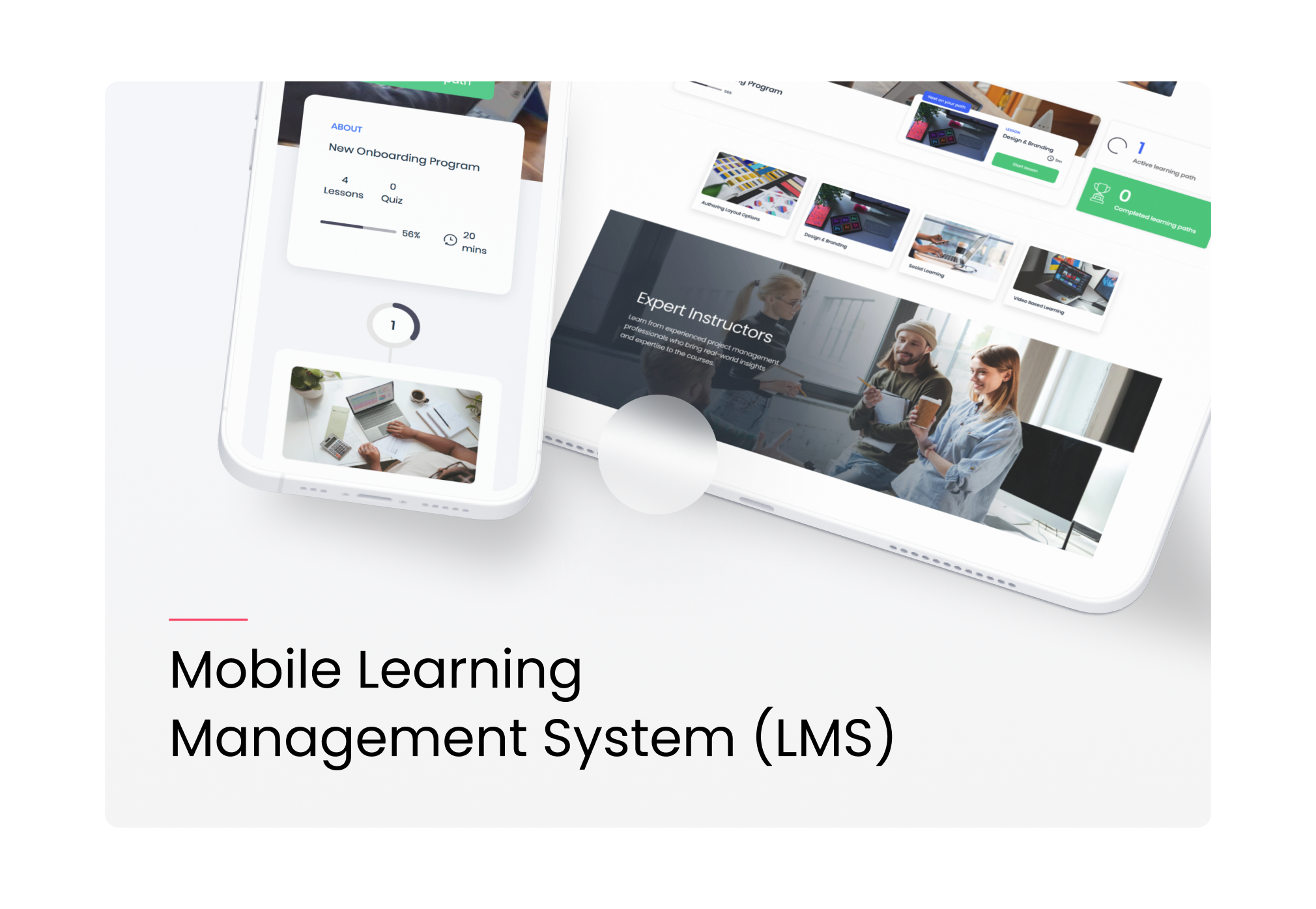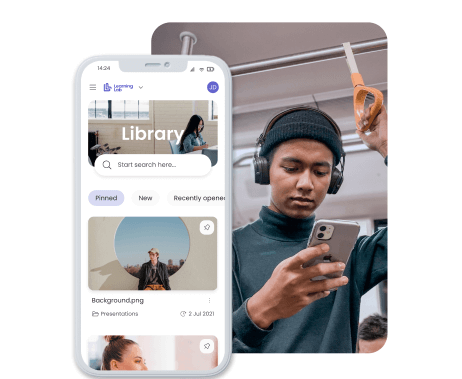Learners’ retention for your Online Software Training
6 Tips to improve your learners’ retention for your Online Software Training
Improving learner retention in software training programs requires a multifaceted approach that caters to diverse learning styles and preferences.
Incorporating activities that require active participation can significantly enhance engagement and recall. These activities could range from hands-on coding challenges to real-world problem-solving tasks that simulate the software’s environment.
Video assessments play a critical role in reinforcing learning objectives by providing visual feedback and allowing learners to gauge their understanding in a practical context.
Peer-to-peer learning further enriches the experience by facilitating the exchange of insights, techniques, and solutions among learners, fostering a collaborative learning atmosphere.
Blended learning, which combines online digital media with traditional classroom methods, offers the flexibility to accommodate different learning paces and preferences, ensuring that all learners can benefit from the training regardless of their initial skill levels.
Multimedia learning experiences that integrate text, images, audio, and video can cater to various sensory preferences, making complex software concepts more accessible and easier to understand.
By adopting these strategies, trainers can significantly improve retention rates, ensuring learners not only acquire but also retain the skills and knowledge imparted during the software training sessions.
1. Benefits of Learning Experience design for software training
Learning Experience Design (LXD) plays a pivotal role in enhancing software training programs by focusing on creating educational experiences that are engaging, effective, and tailored to meet the learners’ needs.
The benefits of LXD in software training are manifold. Firstly, it ensures that the training is user-centric, prioritizing the learners’ experiences and backgrounds to foster deeper understanding and retention. By employing principles of LXD, educators can design courses that are not only informative but also interactive and enjoyable, increasing learners’ motivation and engagement.
LXD facilitates the incorporation of real-world applications and problem-solving exercises, which are crucial for software training. This approach helps learners to not only grasp theoretical concepts but also to apply them in practical scenarios, significantly enhancing skill acquisition.
LXD supports the integration of feedback loops and adaptive learning paths, allowing for continuous improvement of the training content based on learner performance and preferences. Overall, Learning Experience Design transforms software training from a passive information delivery into an immersive learning journey, leading to more effective skill development and better preparation for real-world challenges.
2. Adopt Multimodal Learning for Software Online Training
Adopting multimodal learning for software online training encompasses a holistic approach that significantly enhances learner engagement and comprehension.
By integrating visual design, the training material becomes more accessible and appealing, allowing learners to easily navigate through complex software functionalities and concepts.
Audio content adds a layer of depth to the learning experience, catering to auditory learners and providing an alternative means to absorb information, which is particularly beneficial for explaining intricate processes or providing step-by-step instructions.
Incorporating activities into the training ensures that learners actively apply what they have learned, thereby reinforcing their understanding, and improving retention.
Video-based learning serves as a powerful tool, offering visual demonstrations and real-time examples that effectively bridge the gap between theoretical knowledge and practical application.
This multimodal approach ensures that learners can interact with the content in various ways, catering to different learning styles and preferences, ultimately leading to a more engaging and effective software training experience.
3. Advantage of social and peer to peer learning for your online software training
The advantage of social and peer-to-peer learning in online software training lies in its ability to foster a collaborative and engaging learning environment.
This approach taps into the collective knowledge and experiences of the group, allowing learners to share insights, ask questions, and offer solutions in real-time. It breaks down the isolation often felt in online learning, encouraging interaction and building a community of learners who support each other’s growth.
This method not only enhances understanding through diverse perspectives but also boosts motivation and retention by making learning a more social experience.
Peer-to-peer learning empowers participants to learn from each other’s successes and challenges, facilitating a deeper understanding of the software being taught. By leveraging the dynamics of group learning, online software training becomes a more dynamic, interactive, and effective educational experience.
4. Adopt video-based learning for your Online Software Training
Adopting video-based learning for your online software training brings a transformative and immersive learning experience to the forefront.
By incorporating video assessments, learners can receive immediate feedback on their performance, helping them identify areas of improvement and reinforcing their understanding of key concepts. Screen recording serves as an invaluable tool, offering step-by-step tutorials that visually demonstrate software functionalities and processes, making complex tasks more comprehensible.
Video quizzes add an interactive element to the learning journey, engaging learners in a fun and effective way to test their knowledge and retention.
Interactive videos go a step further by allowing learners to make decisions and engage with the content actively, fostering a deeper connection with the material. Lastly, live virtual classrooms replicate the dynamics of a traditional classroom setting, providing real-time interaction with instructors and peers, facilitating discussions, and enabling instant clarification of doubts.
This holistic approach not only caters to varied learning preferences but also enhances the efficacy of online software training by making it more engaging, flexible, and accessible.
5. Activities based learning for engaging online software training
Activities-based learning is a cornerstone for engaging online software training, fostering an interactive and immersive learning environment that goes beyond traditional lecture-based methods.
This approach emphasizes hands-on tasks, practical exercises, and real-world challenges that require learners to apply what they’ve learned directly within the software context. By integrating coding exercises, software simulations, and collaborative projects, learners can immediately practice and refine their skills, leading to deeper understanding and retention.
These activities not only make the learning process more dynamic and enjoyable but also cater to a variety of learning styles, ensuring that each learner can engage with the content in a manner that best suits their preferences.
Activities-based learning encourages problem-solving and critical thinking, skills that are essential for software professionals facing the ever-evolving challenges of the tech industry. By prioritizing active participation and practical application, online software training becomes a more effective and engaging experience for all participants.
6. Nano-Learning for Online Software Training
Nano-learning for online software training represents a highly focused and efficient approach to skill acquisition, perfectly suited for the fast-paced and ever-evolving tech industry.
This method breaks down complex software training into bite-sized, manageable chunks of information that can be easily consumed in a short period, typically ranging from 2 to 5 minutes. This approach is especially beneficial for learners who have limited time or prefer to gradually build their knowledge without feeling overwhelmed.
By concentrating on one specific skill or concept at a time, nano-learning facilitates quick retention and immediate application, making it an effective tool for both beginners and experienced professionals looking to update their skills.
It caters to the modern learner’s need for flexibility, allowing them to learn at their own pace and on-the-go, whether they’re looking to grasp a new programming language, software tool, or coding technique. Nano-learning’s modular nature also enables learners to easily revisit and reinforce specific concepts as needed, enhancing long-term retention and proficiency in software skills.
Conclusion
Improving learner retention in software training programs requires a multifaceted approach that caters to diverse learning styles and preferences.
Incorporating activities that require active participation can significantly enhance engagement and recall. These activities could range from hands-on coding challenges to real-world problem-solving tasks that simulate the software’s environment.
Video assessments play a critical role in reinforcing learning objectives by providing visual feedback and allowing learners to gauge their understanding in a practical context.
Peer-to-peer learning further enriches the experience by facilitating the exchange of insights, techniques, and solutions among learners, fostering a collaborative learning atmosphere.
Blended learning, which combines online digital media with traditional classroom methods, offers the flexibility to accommodate different learning paces and preferences, ensuring that all learners can benefit from the training regardless of their initial skill levels. Lastly, multimedia learning experiences that integrate text, images, audio, and video can cater to various sensory preferences, making complex software concepts more accessible and easier to understand.
By adopting these strategies, trainers can significantly improve retention rates, ensuring learners not only acquire but also retain the skills and knowledge imparted during the software training sessions.
Simplify Learning,
Elevate Design.
IMAGINE. CREATE. CRAFT. INNOVATE. LEARN.







